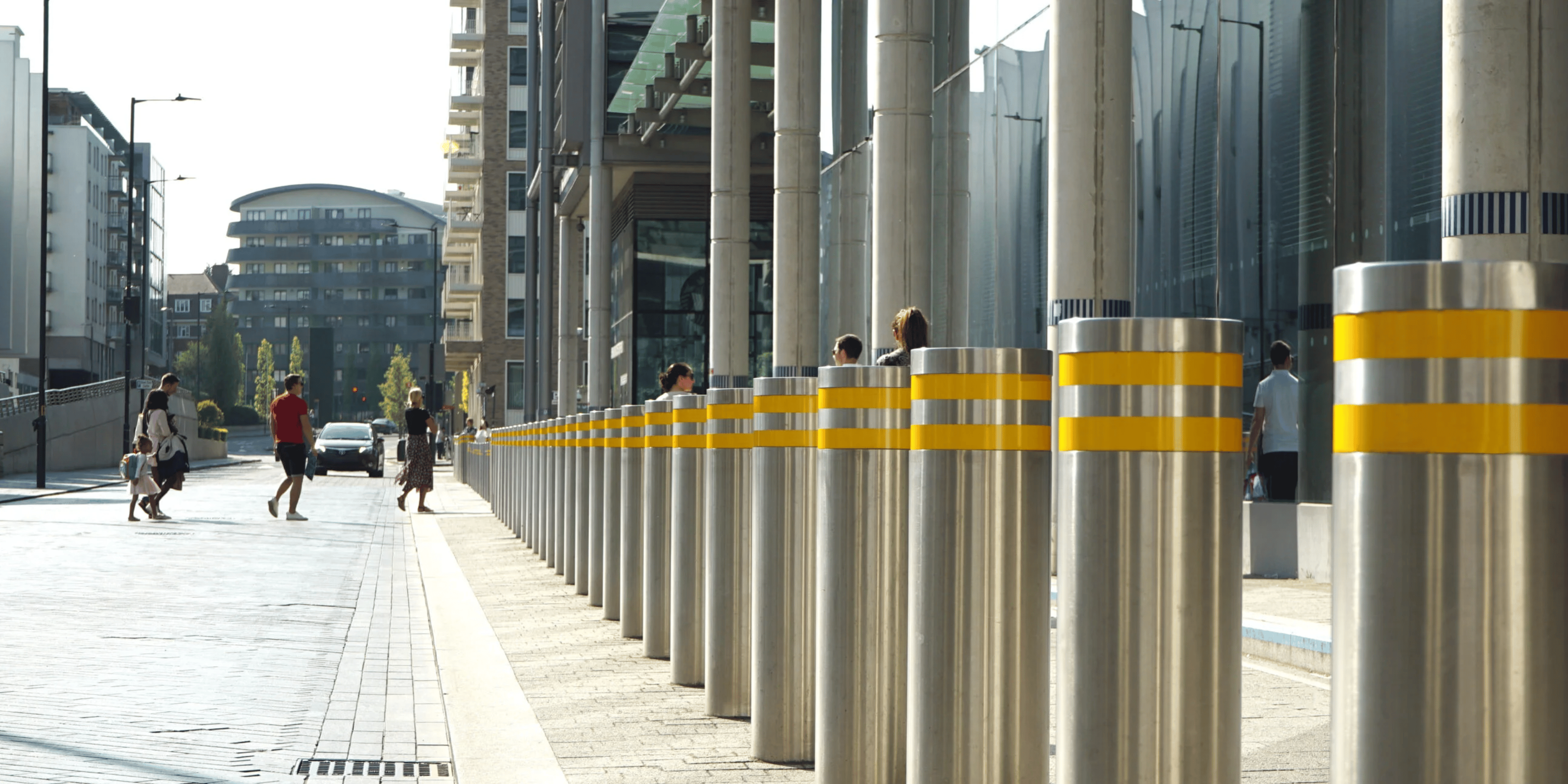
Essential Security and Patrol Services for Construction Sites

Overview
The construction industry in the UK faces significant security challenges, with theft and vandalism costing approximately £800 million annually. This stark reality underscores the necessity for robust security and patrol services on construction sites. Businesses must recognise that failing to address these risks not only leads to financial losses but also threatens operational efficiency and reputational integrity.
Implementing tailored protective measures is essential. Advanced surveillance technologies, effective access control systems, and rapid-response patrols are not mere expenses; they are critical investments in safeguarding assets and ensuring business continuity. In practise, these proactive security strategies can significantly mitigate risks, thereby enhancing overall operational resilience.
Priority First stands out as a pragmatic solution provider, offering a proven track record in securing over £1.6 billion in assets. By prioritising security, businesses can prevent greater losses down the line. The lesson is clear: early investment in security is not just a protective measure; it is a strategic decision that supports long-term business viability.
Introduction
The construction industry faces a significant challenge, with over 11,000 incidents of equipment theft reported annually, resulting in costs of around £800 million for businesses. This stark reality underscores the pressing need for effective security and patrol services to safeguard valuable assets and maintain project integrity.
As construction sites become increasingly susceptible to threats, the question arises: how can tailored security solutions not only protect investments but also enhance operational efficiency?
This article explores essential strategies and innovative technologies that construction managers can implement to strengthen their sites against theft and vandalism, ultimately paving the way for safer, more resilient projects.
Priority First Security Services: Tailored Construction Site Security Solutions
Priority First Security Services addresses a significant challenge in the UK construction industry by providing to combat the . Each year, over 11,000 cases of are reported, costing businesses approximately £800 million. This stark reality underscores the necessity for to safeguard assets and maintain project timelines.
Ignoring these risks can lead to severe financial repercussions, operational delays, and reputational damage. The implications are clear: without , are vulnerable to theft and vandalism, which can disrupt operations and inflate costs.
Priority First offers a pragmatic solution by implementing for building projects. Their approach includes a thorough evaluation of site vulnerabilities, allowing for the integration of strong protective measures that address specific threats. By leveraging advanced technology, such as mobile CCTV systems and , alongside skilled personnel, Priority First enhances safety and provides real-time insights. This enables contractors to focus on their core operations without the burden of safety concerns.
As the construction landscape evolves, optimal strategies for site protection in 2025 will emphasise . Stringent access control and frequent security and patrol services are essential for mitigating risks. Safety specialists advocate for a systematic approach to risk management, emphasising that security and patrol services can significantly reduce the likelihood of theft and vandalism. Successful implementations of these strategies have shown that building sites can achieve a safer environment, ultimately safeguarding investments and ensuring operational efficiency. Early investment in security not only protects assets but also fosters long-term business resilience.
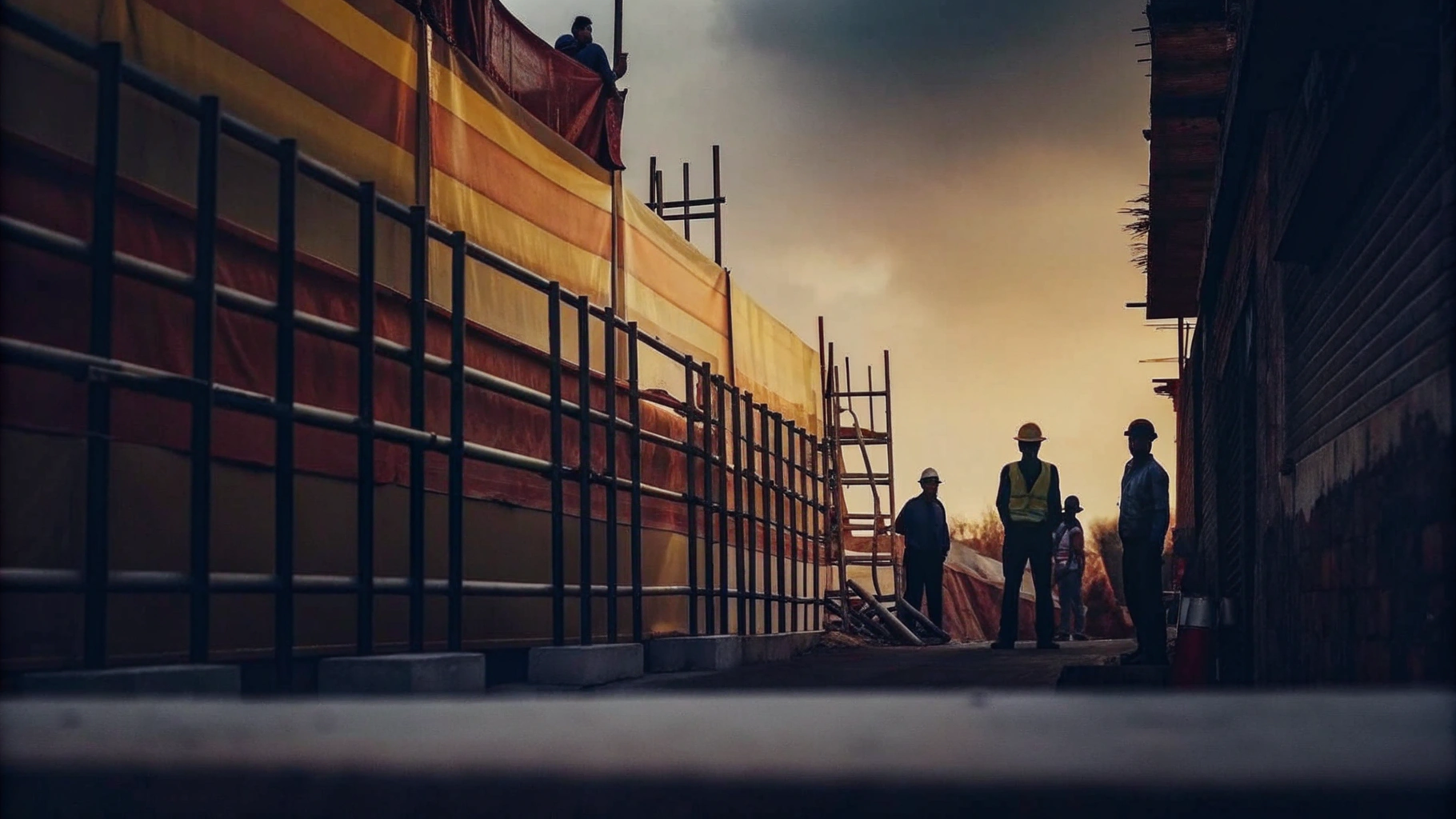
CCTV Monitoring: Enhanced Surveillance for Construction Sites
provides vital 24/7 surveillance capabilities that significantly improve the effectiveness of at building locations. By strategically positioning high-definition cameras around the perimeter and in key areas, managers can effectively deter potential intruders while maintaining continuous observation of activities. and remote access, facilitate immediate alerts, enabling . This proactive strategy ensures that incidents are documented and addressed promptly, thereby associated with theft and vandalism.
The reality is that are particularly susceptible to security breaches, with theft and vandalism costing the UK construction industry an estimated £800 million annually. Implementing security and patrol services, including , can substantially mitigate these losses; for example, a recent client reported zero break-ins within weeks of installing a . This not only protects valuable assets but also enhances compliance with health and security regulations, as recorded footage can serve as critical evidence for insurance claims and investigations.
Security professionals advocate for the integration of , emphasising that systems equipped with motion detection, infrared night vision, and AI analytics can identify threats in real-time. In practise, this capability allows operators to issue audio warnings and promptly notify law enforcement, creating a multi-layered defence against potential threats. Moreover, security and patrol services with , offering a cost-efficient alternative to traditional protection methods, especially for large or multi-site projects.
Integrating CCTV surveillance into building protection strategies not only enhances safety but also fosters a secure and efficient work environment, ensuring that projects remain on schedule and stakeholders can operate with confidence.
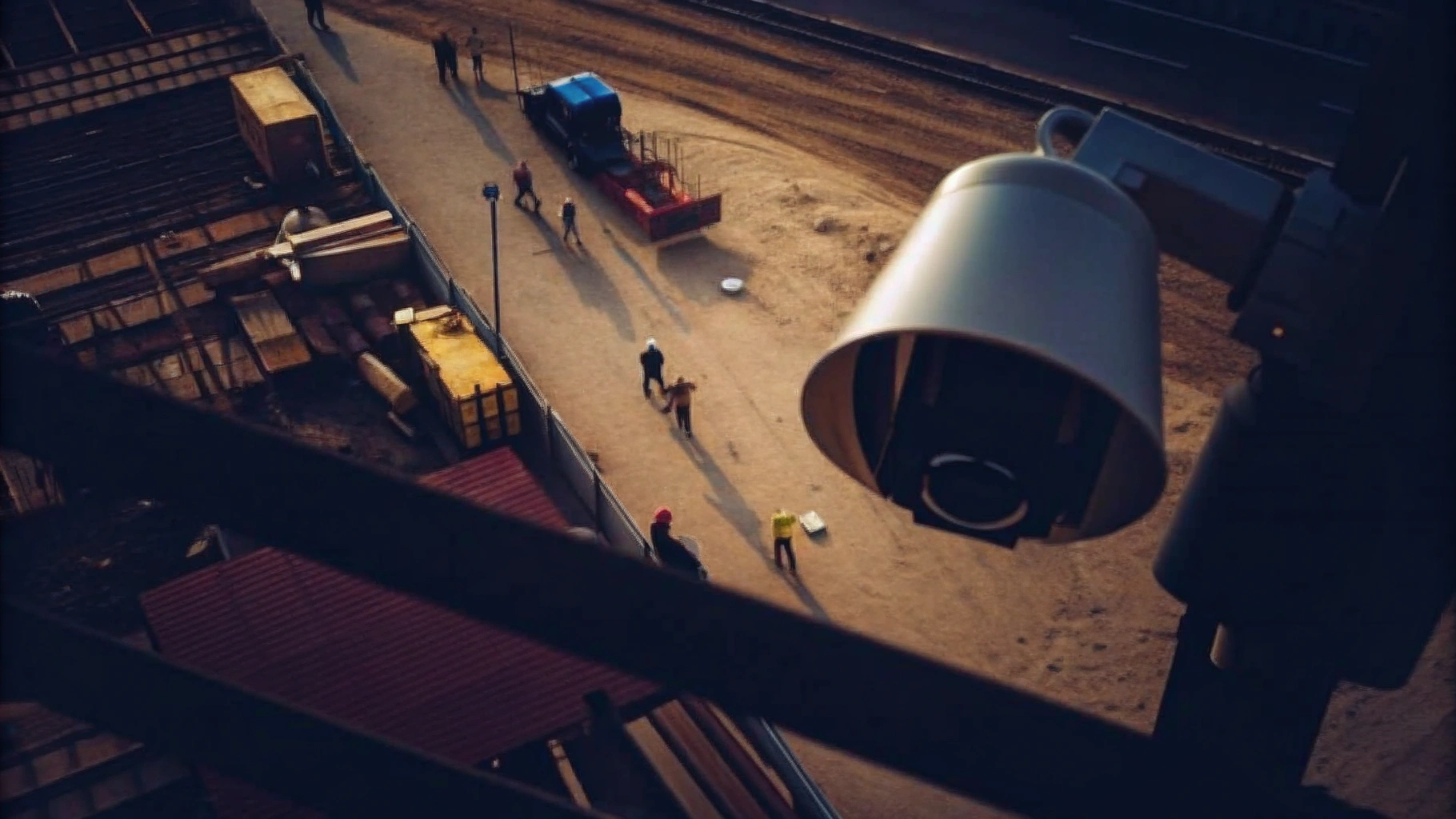
Access Control Systems: Secure Entry Management for Construction Projects
Establishing robust systems is essential for enhancing safety at . These systems, encompassing , biometric scanners, and turnstiles, ensure that only authorised personnel can enter the premises. By maintaining a detailed log of entries and exits, construction managers can effectively at any time, thereby enhancing accountability and significantly reducing the risk of theft or vandalism. Current trends indicate a growing reliance on biometric access control, which offers a heightened level of security through unique identification methods such as fingerprints or facial recognition. This technology not only but also provides valuable data for audits and compliance.
Moreover, integrating access control with additional protective measures, such as , creates a comprehensive framework for that prevents unauthorised entry and bolsters overall safety. Analysts emphasise that efficient entry management is crucial for safeguarding valuable assets and ensuring the smooth operation of construction projects. The lesson is clear: investing in is not merely an expense; it is a strategic move towards .
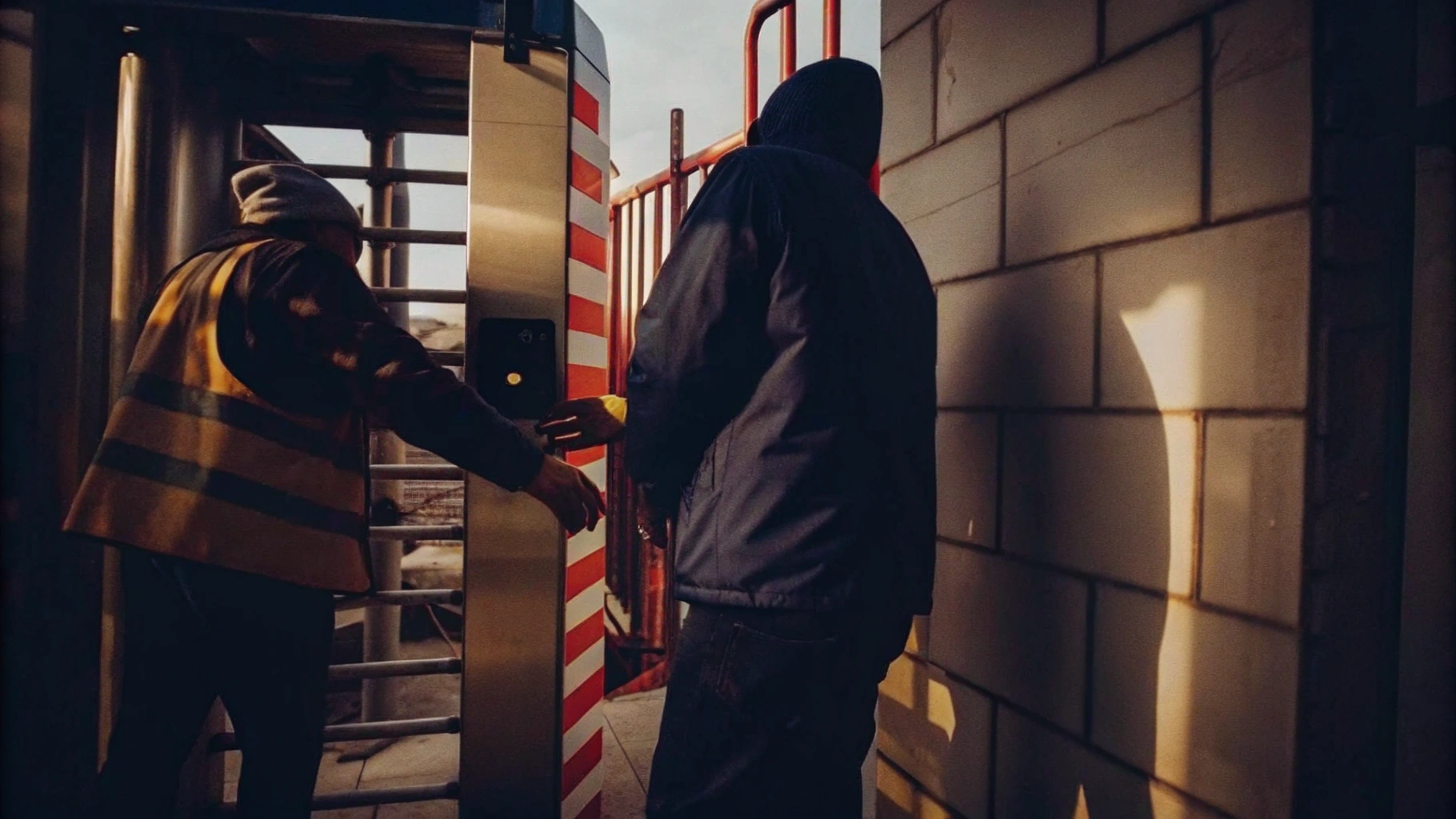
Rapid-Response Patrols: Immediate Threat Detection and Action
Rapid-response patrols are integral to effective and are a vital aspect of , acting as a visible deterrent to criminal activity. Trained perform security and patrol services by conducting regular patrols and actively monitoring for suspicious behaviour and potential threats. Their presence not only deters theft and vandalism but also fosters a sense of security and patrol services among workers, which is essential for maintaining productivity on-site. In the event of an incident, the security and patrol services can respond immediately, minimising damage and ensuring the safety of both personnel and assets.
Recent incidents, such as the , highlight the . A reported increase in theft incidents during economic downturns has rendered building sites particularly vulnerable, with over 11,000 equipment thefts occurring annually. Protection experts emphasise that a noticeable protective presence, including security and patrol services, significantly impacts crime rates, asserting that the presence of guards can discourage potential thieves and lessen the chances of incidents.
in overseeing protection for upscale building projects, such as a hotel on Sloane Street, illustrates the effectiveness of tailored safety solutions. Our skilled safety staff not only provided building protection but also logistics coordination, canine services, and , ensuring that the area remained secure and organised. The effectiveness of security and patrol services in deterring construction theft is further supported by data indicating that locations with . Current trends show an increasing reliance on security and patrol services, particularly in luxury projects, which offer a cost-effective solution for sites that do not require 24/7 guarding. By integrating with routine security and patrol services, including CCTV and motion detection systems, construction firms can enhance their protective measures, ensuring comprehensive defence against theft and other risks. This proactive approach not only safeguards valuable assets but also conveys professionalism to investors and local councils, underscoring the importance of robust protective strategies in the construction sector.

AI-Driven Security Tools: Smart Solutions for Construction Site Safety
are fundamentally transforming through advanced monitoring and threat detection capabilities. These systems assess video streams in , recognising unusual behaviours and notifying personnel of potential threats. Predictive analytics enhance this process by identifying vulnerabilities and recommending proactive measures to mitigate risks. For instance, , such as workers without proper personal protective equipment (PPE), and send immediate alerts to supervisors, thereby preventing accidents before they occur.
The integration of AI technology not only but also improves , creating a secure environment for employees and protecting valuable assets. A significant 38% of UK builders believe that , underscoring the growing confidence in these technologies. Furthermore, firms that implement for building security by 2025 are expected to gain a competitive edge through reduced downtime, lower security costs, and improved worker safety.
Case studies illustrate the practical benefits of AI in project management for construction. For example, AI-driven automated perimeter monitoring has proven efficient in deterring plant theft, dispatching real-time notifications to managers when unauthorised activity is detected. Additionally, , optimising vehicle flow and swiftly identifying incidents to minimise disruptions.
As the construction sector continues to embrace digital transformation alongside human wellbeing, the is essential for enhancing protection and operational efficiency. By prioritising communication and collaboration, project managers can leverage these technologies to maximise their benefits, ensuring that human judgement remains central to decision-making while utilising the insights provided by AI.
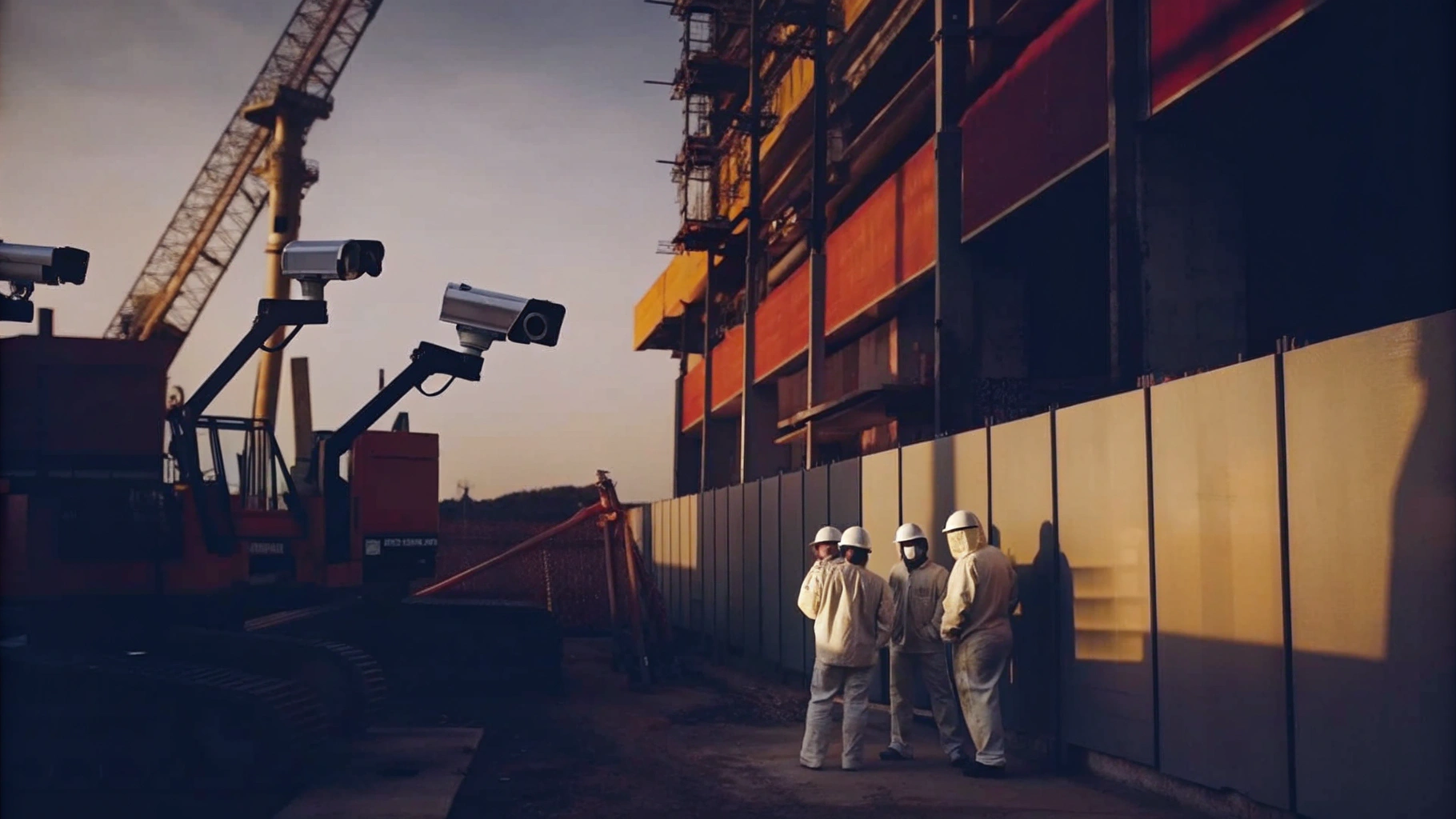
Canine Services: Enhanced Security Presence on Construction Sites
significantly enhance by acting as a formidable deterrent against theft and vandalism. Trained the premises, leveraging their exceptional senses to and . The reality is that the simple presence of a canine unit not only enhances protective measures but also instils confidence among employees, contributing to a safer work environment. Moreover, these dogs can be specifically trained for various tasks, such as locating contraband or tracking individuals, thereby improving overall safety operations.
Recent research suggests that one well-trained K9 can carry out the responsibilities of up to six guards, making them a cost-efficient option for building locations. This is especially pertinent given that the average projected worth of a piece of machinery taken from building locations surpasses £29,000, highlighting the financial consequences of theft and the necessity of . Their ability to detect intruders and potential hazards, such as gas leaks, underscores their value in maintaining safety and compliance on-site.
As building sites continue to encounter distinct safety challenges, the incorporation of canine teams is becoming a common practise. Many success stories demonstrate their efficiency in deterring theft and ensuring project continuity. For instance, in a recent case study involving a luxury hotel construction project, played a crucial role in by over 50%, showcasing the tangible benefits of this approach. Priority First's dedication to loyalty, adaptability, discretion, professionalism, and client-focused service further increases the value of canine services, making them an essential component of a strong strategy.
A thorough risk evaluation is crucial to recognise weaknesses and possible dangers, further highlighting the necessity for security and patrol services in a complete protective strategy. The lesson is clear: early investment in canine services not only prevents theft but also of construction projects.
Health and Safety Compliance: Integrating Security with Regulatory Standards
Incorporating protective protocols alongside is critical for . The role of is vital in ensuring adherence to safety protocols, such as:
Their presence acts as a and potential hazards, significantly lowering the risk of accidents. By collaborating closely with health and safety officers, security and patrol services can foster a safer work environment, ensuring compliance with legal mandates and industry standards while enhancing operational efficiency through .
Real-world examples underscore the effectiveness of this collaboration. Staff have been known to act swiftly when protocols are breached, thereby preventing incidents that could lead to injuries or project delays. This but also bolsters the overall reputation of the construction project, as is often a key factor in client satisfaction and project success.
Moreover, the integration of safety with health and welfare protocols cultivates a culture of protection on-site. As one officer noted, "A carefully devised protection plan, integrating on-site guards and continuous monitoring, can avert losses, ensure worker safety, and maintain project timelines." This comprehensive approach ultimately enhances health and compliance, safeguarding both personnel and assets while keeping projects on track.
Furthermore, the presence of security and patrol services significantly reduces the likelihood of unlawful activities, as evidenced by case studies on the deterrent effect of security personnel. Additionally, the strengthens site security, ensuring that safety protocols are not only enforced but also effectively monitored.
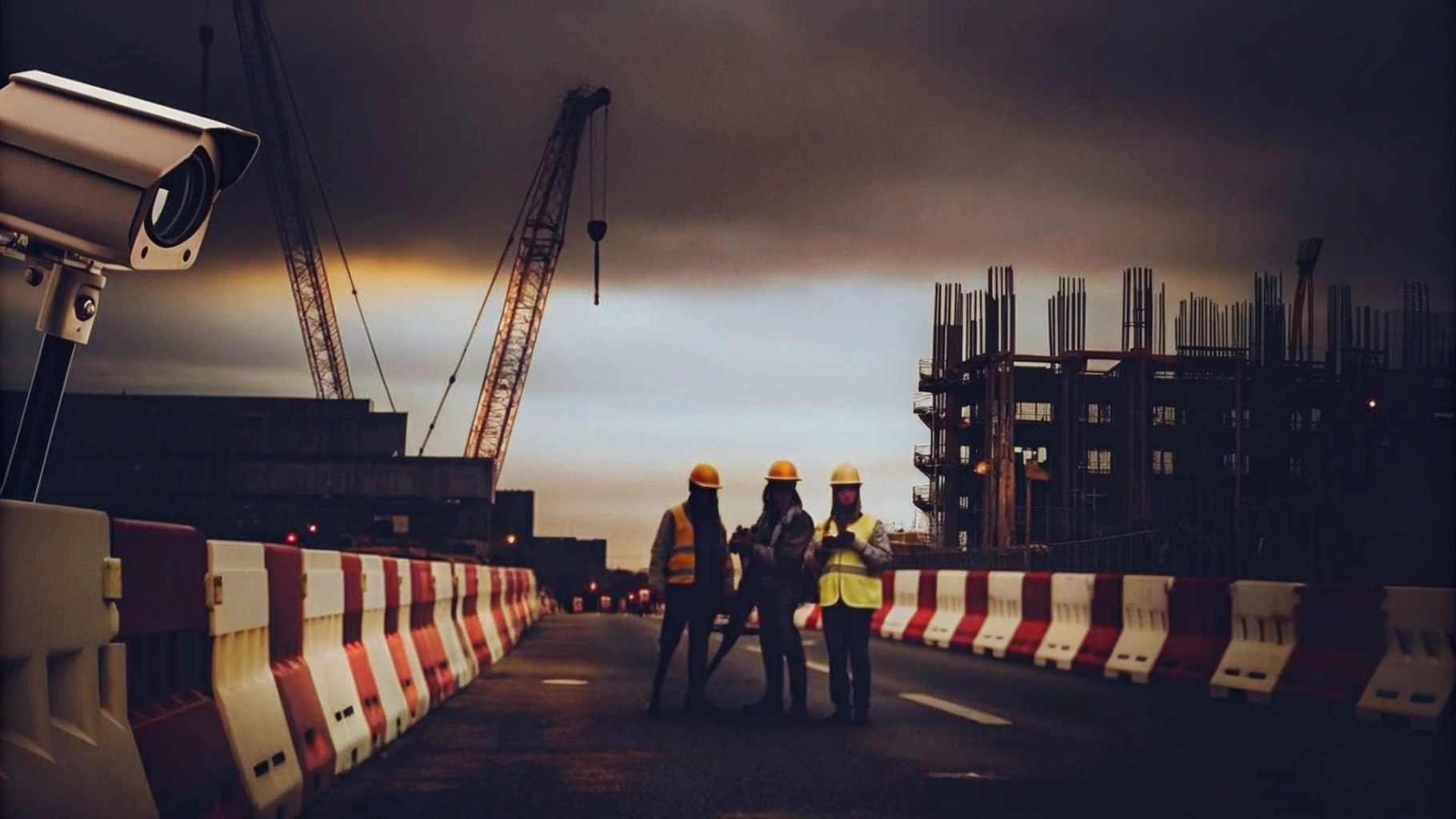
Comprehensive Risk Assessments: Identifying Vulnerabilities on Construction Sites
are essential for identifying vulnerabilities that must address on construction sites. By systematically evaluating potential threats—such as unauthorised access points, equipment storage areas, and environmental hazards—construction managers can develop . This proactive approach allows for the implementation of appropriate measures, including , access control, and personnel training, all of which are essential components of [security and patrol services](http://priorityfirst.co.uk/insights/master-alarm-systems-best-practices-for-construction-site-managers) to mitigate identified risks. Regular updates to risk assessments are crucial, ensuring that security and patrol services adapt effectively as projects evolve.
Current trends in risk assessment practices highlight the integration of , which improve the accuracy of vulnerability identification. Dynamic evaluation mechanisms are replacing traditional static models, enabling . Security analysts assert that recognising vulnerabilities in building environments requires a comprehensive understanding of both physical and operational risks to enhance security and patrol services.
Real-world examples underscore the importance of these assessments. For instance, a UK-based surveying company successfully recovered stolen equipment due to its real-time tracking system, illustrating how proactive measures can deter theft. Furthermore, the Health and Safety Executive stresses that not only meets legal requirements but also fosters a culture of safety, ultimately protecting both assets and staff.

Event Security: Safeguarding Construction Site Gatherings
is crucial in managing gatherings on construction sites, including open houses and community meetings. These events often attract large audiences, making it essential to develop a that encompasses crowd control, access management, and . Experts in safety emphasise that a visible protective presence can deter antisocial behaviour and reassure participants, which is vital for during such events.
to handle various scenarios is imperative. They must be prepared to respond effectively to potential incidents while ensuring adherence to health and safety regulations. As industry experts note, effective not only maintain order but also enhance the visitor experience. This can involve implementing measures such as ticket checks, metal detectors, and clear signage to guide attendees during emergencies.
Recent incidents at construction project events have underscored the importance of . Overcrowding, for example, can lead to hazardous situations, necessitating a well-defined emergency response plan that outlines procedures for medical incidents and evacuations. By leveraging technology, such as and high-definition CCTV, project managers can bolster their protective measures, enabling real-time identification of unusual behaviours and swift responses to potential threats.
in construction relies on a proactive strategy. This includes regular training and drills for personnel, ensuring they are equipped for real-life situations. By investing in , project managers not only secure their sites but also create a safe environment that allows them to focus on project milestones without disruption.
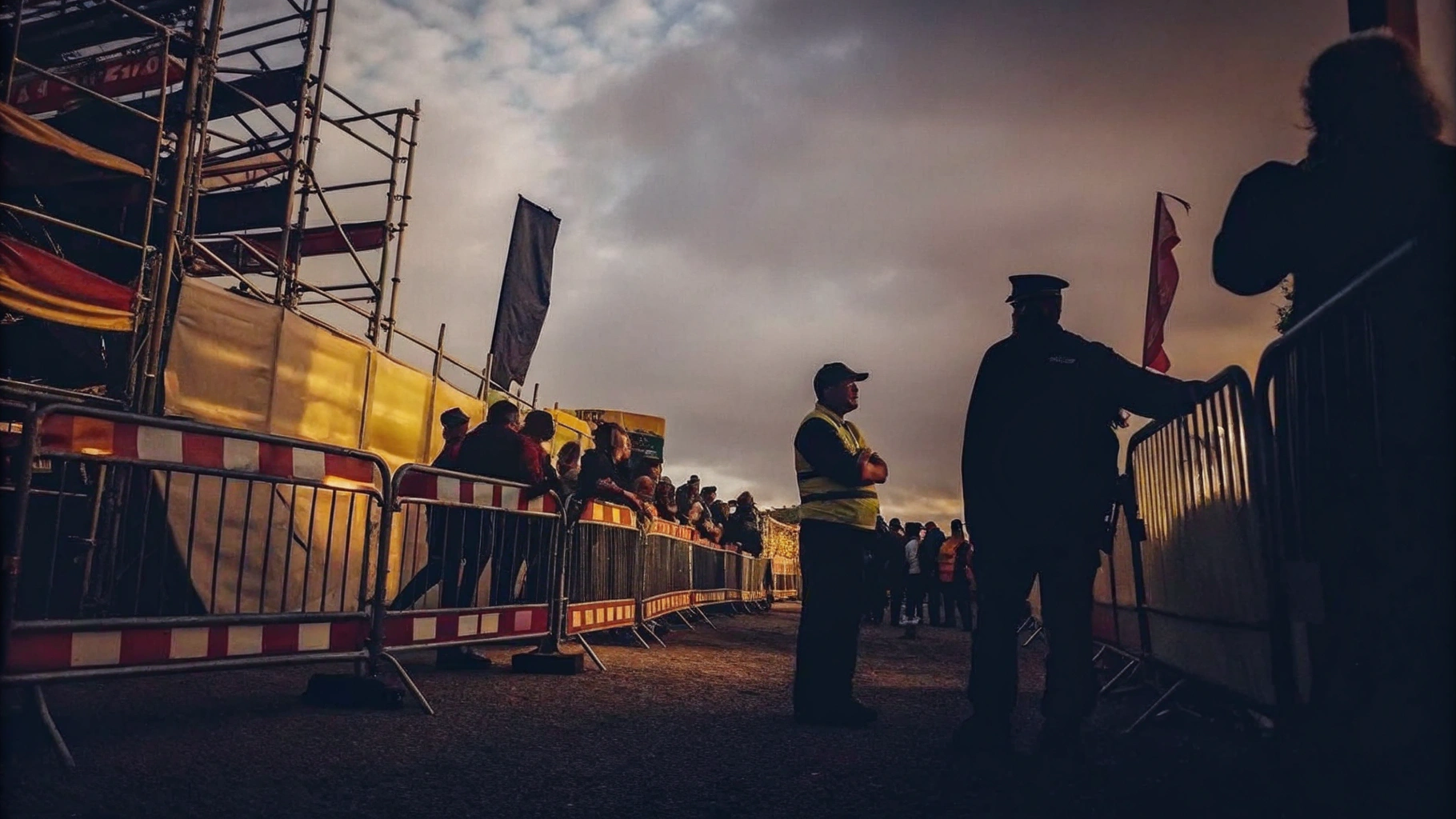
Facilities Management: Ensuring Secure and Efficient Construction Operations
Facilities management is essential for ensuring and efficient operations at construction sites. By integrating tailored protective measures with daily activities—such as monitoring access points, maintaining equipment, and ensuring —facilities managers can establish a cohesive protective strategy.
Priority First offers comprehensive , which include security and patrol services such as:
- High-volume monitoring
These services effectively manage all aspects of location safety. Regular evaluations and maintenance of , including alarms and measures, are vital for identifying potential issues before they escalate.
HVM, which involves physical barriers to prevent vehicles from being used as weapons, is a critical component of a layered protection strategy that enhances site safety. This proactive stance not only enhances but also contributes to the overall success of , enabling teams to concentrate on their primary objectives.
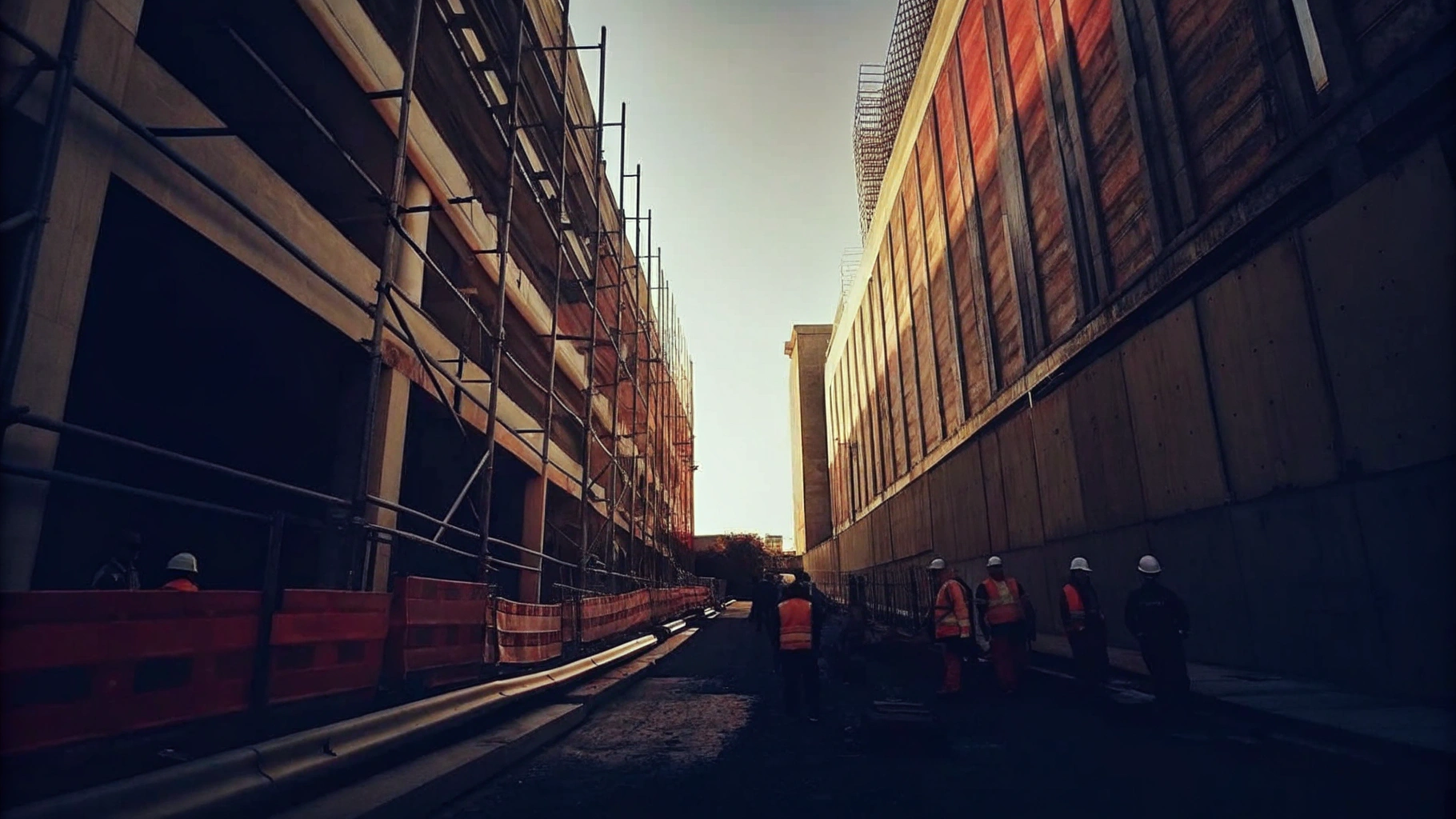
Conclusion
Priority First Security Services addresses the critical need for effective security solutions in the construction industry. With theft and vandalism costing UK businesses over £1 million a week, the implementation of tailored security and patrol services is essential. By prioritising safety through comprehensive strategies, construction companies can protect their assets, maintain project timelines, and enhance overall operational efficiency.
The reality is that several key measures ensure robust security on construction sites. From advanced CCTV monitoring and access control systems to rapid-response patrols and AI-driven tools, each approach contributes to a multi-layered defence against potential threats. Additionally, the incorporation of canine services and comprehensive risk assessments further strengthens protective strategies, ensuring that vulnerabilities are identified and addressed proactively. The emphasis on health and safety compliance highlights the importance of integrating security measures with regulatory standards, fostering a culture of safety that benefits both personnel and projects.
That said, investing in effective security and patrol services is a strategic move that safeguards valuable assets and enhances business resilience. As the construction landscape continues to evolve, embracing these best practises will be crucial for companies aiming to thrive in a competitive environment. By prioritising safety and implementing innovative security solutions, construction firms can create a secure and efficient work environment, paving the way for successful project completion and long-term growth.
Frequently Asked Questions
What security challenges does Priority First Security Services address in the construction industry?
Priority First Security Services addresses the rising incidence of security threats in the UK construction industry, where over 11,000 cases of equipment theft are reported annually, costing businesses approximately £800 million.
What are the consequences of ignoring security risks on construction sites?
Ignoring security risks can lead to severe financial repercussions, operational delays, and reputational damage, making construction projects vulnerable to theft and vandalism.
How does Priority First provide tailored security solutions for construction sites?
Priority First implements tailored protection strategies by evaluating site vulnerabilities and integrating strong protective measures, leveraging advanced technologies like mobile CCTV systems and AI-driven monitoring tools, along with skilled personnel.
What role does CCTV monitoring play in construction site security?
CCTV monitoring provides 24/7 surveillance, deterring potential intruders and allowing continuous observation. It includes features like motion detection and remote access for immediate alerts, helping to document incidents and minimise risks associated with theft and vandalism.
How effective is CCTV monitoring in preventing theft on construction sites?
CCTV monitoring has proven effective; for example, a recent client reported zero break-ins within weeks of installing a comprehensive CCTV system, protecting valuable assets and enhancing compliance with health and security regulations.
What are the benefits of integrating access control systems at construction sites?
Access control systems ensure that only authorised personnel can enter construction sites, enhancing safety by maintaining a log of entries and exits. This reduces the risk of theft and vandalism and improves accountability.
What types of access control systems are commonly used in construction projects?
Common access control systems include keycard access, biometric scanners, and turnstiles, with a growing reliance on biometric methods like fingerprints or facial recognition for heightened security.
How does integrating access control with other security measures improve site safety?
Integrating access control with CCTV monitoring creates a comprehensive security framework that prevents unauthorised entry and bolsters overall safety, safeguarding valuable assets and ensuring smooth project operations.
Why is investing in security measures considered a strategic move for construction projects?
Investing in effective security measures is seen as a strategic move towards business continuity and resilience, as it protects assets and fosters long-term operational efficiency.



